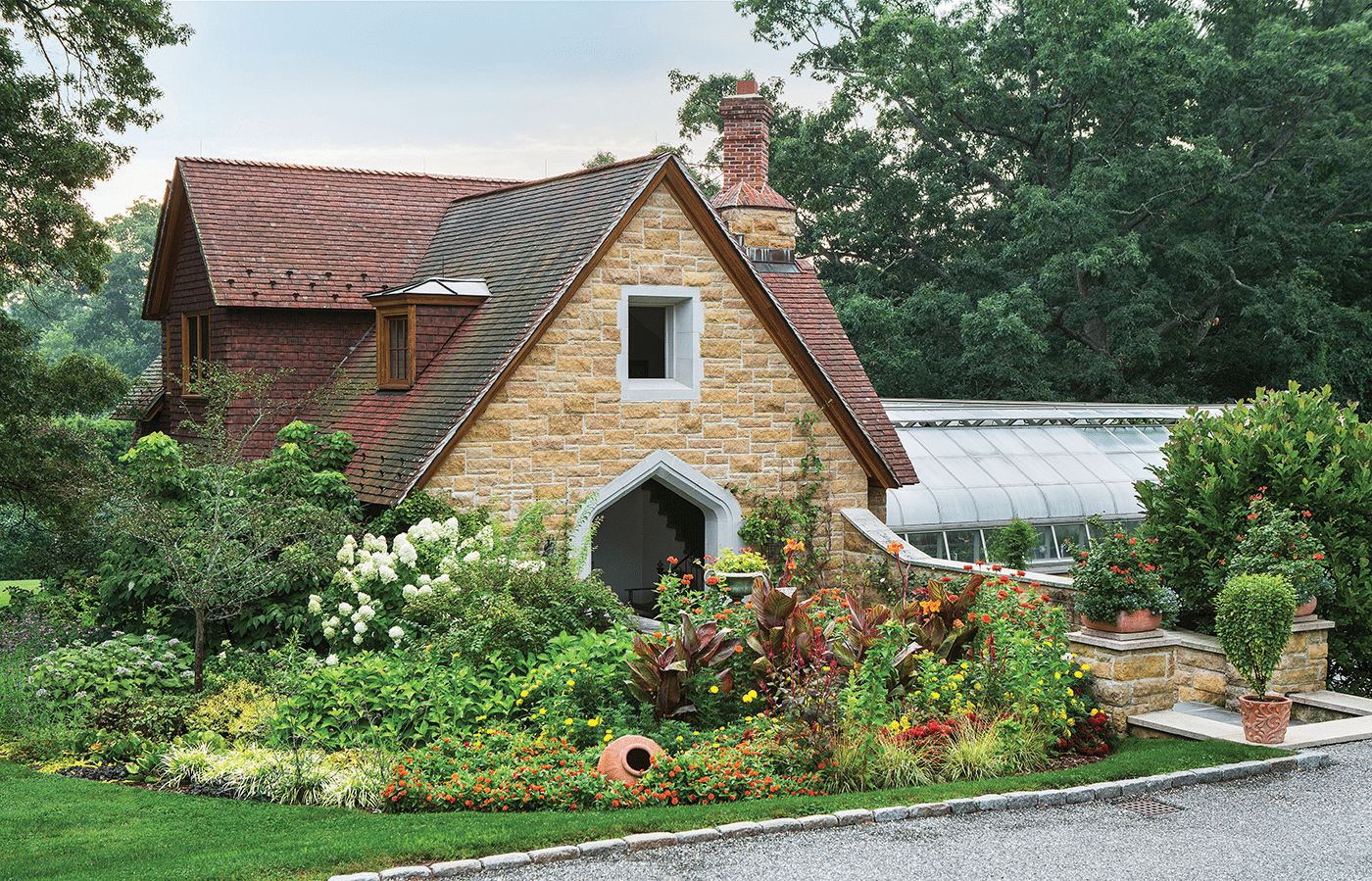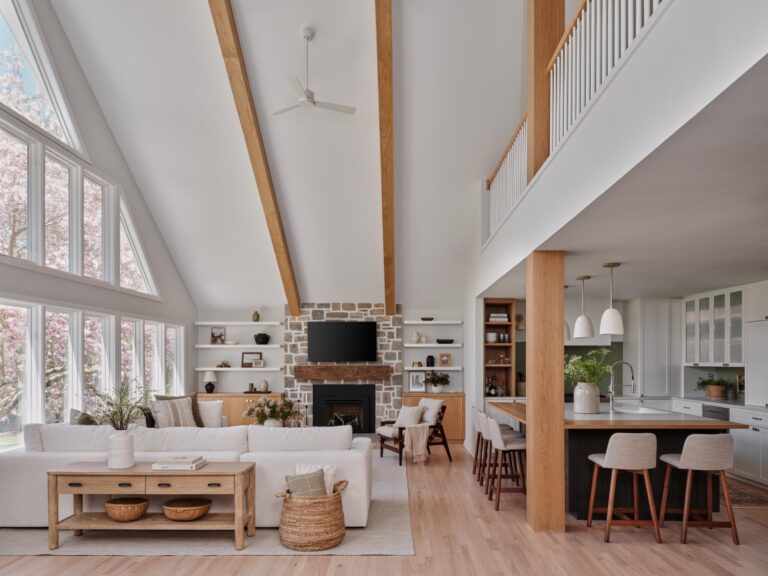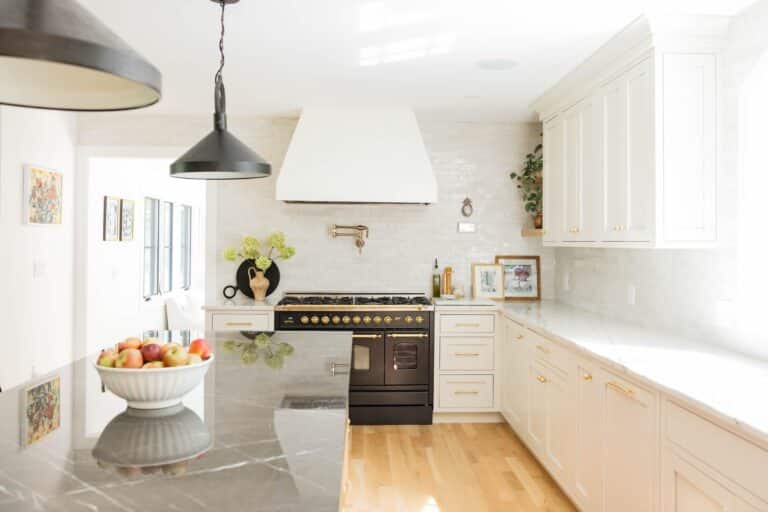Early October is when many serious gardeners move their outdoor plants indoors—before the first frost. But others invest in greenhouses to keep their plants nice and warm through spring. “The purpose of a residential greenhouse is to provide an environment where tropical plants—or ones that won’t survive our winters—can flourish year-round,” explains James McArdle of McArdle’s Florist and Garden Center in Greenwich, CT. He adds that greenhouses not only protect plants from freezing, but the glass or plastic walls allows more light than a plant will receive when placed by a standard home window. Says McArdle: “While some tropical plants can excel in indirect or even low light, many have a critical photoperiod of six hours or more of direct sun, hence the need for a greenhouse.”
Thinking about building one? The first step is to choose the location carefully. Jack Horn, head gardener at Wadia Associates in New Canaan, CT, explains, “The ideal site for a freestanding greenhouse is on the north side of the property where it is exposed to sunlight all day from east to west, without being shaded by trees or buildings.” He explains for an add-on greenhouse the ideal setting would be on the south side of a house or building where (once again) it is exposed to sunlight all day from east to west.
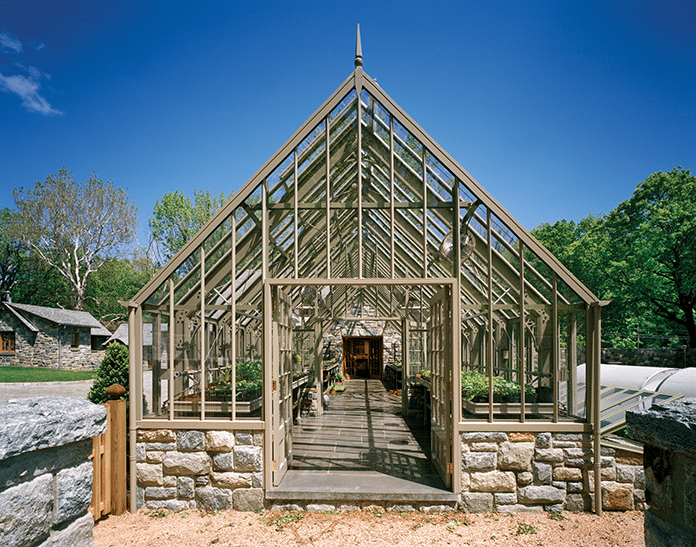
After location, “a good layout, generous sunlight, solar screening, watering systems and durable, easy to clean materials are among the most important greenhouse elements,” says Chuck Hilton of Charles Hilton Architects in Greenwich. Heat, air movement and ventilation are needed as well, adds Horn: “Elements can be introduced such as a humidifier, heat mats for propagating seeds and cuttings, additional electric lighting for plants that prefer more than 12 hours of sunlight a day, and a carbon dioxide generating machine, which helps plants breathe at optimal capacity.” Douglas VanderHorn of VanderHorn Architects counts glass walls, benching durable enough to hold gravel and plants, shades and precise water distribution among his must-haves.
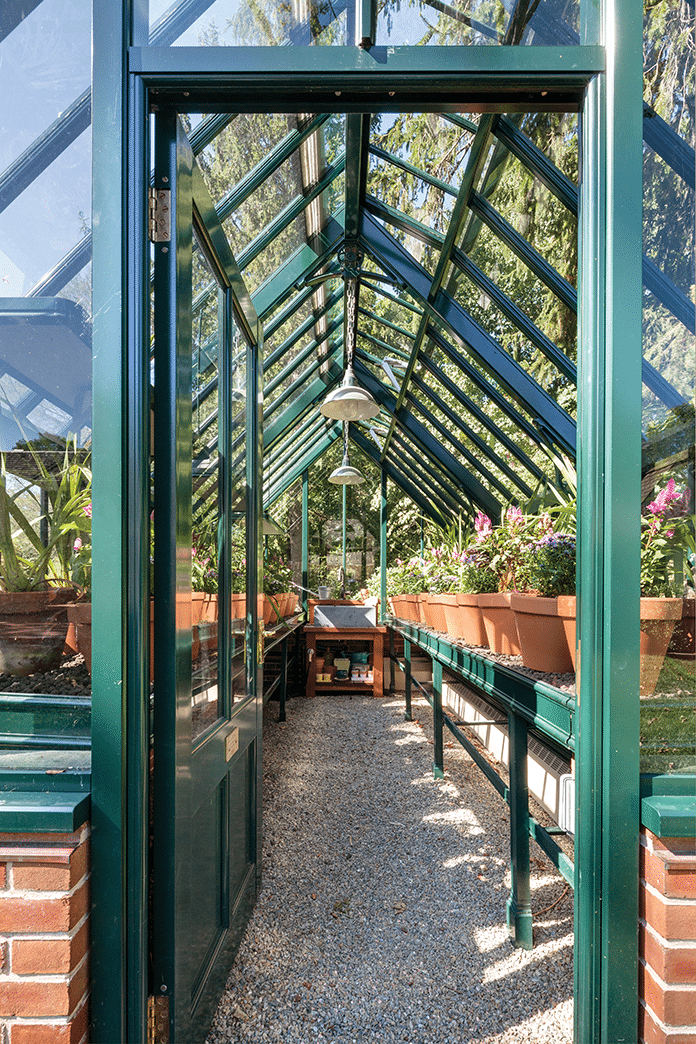
Like people, different plants have different needs, and a greenhouse can be divided into sections to keep a diverse group of plants happy. For example, in the greenhouse pictured above, designed by Wadia Associates, the West Wing section has a fogging machine that mimics a tropical rainforest, ensuring plenty of humidity. Mature flowering vines create an overhead canopy to diffuse sunlight for shade-loving ferns, tropical plants and orchids. The East Wing (which has full sun) is used for cacti, succulents and sun-loving tropicals, and for cultivating hundreds of plants from seed and cuttings, which are used in the gardens.
Once you’ve made the investment in a greenhouse for your plants, take full advantage of this unique indoor/outdoor space on your property. Many owners will transform greenhouses into enchanting rooms to host parties or events, and some gardeners don’t close up the greenhouse come summer. Says Maggie Bridge of Sam Bridge Nursery & Greenhouses in Greenwich: “It all depends on what types of plants you are growing. We use our greenhouse year round.”
Photos by: (VanderHorn and Hilton) Woodruff/Brown; (Wadia) Jonathan Walden
